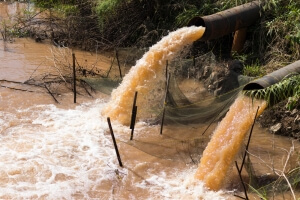“Water is the driving force of all nature;” so said Leonardo da Vinci. The survival of our planet depends on the availability of water and the condition that it is in. It is therefore vital to make sure that it is able to provide a hospitable environment for those that live in it, and is free from harmful levels of substances for those that drink it.
Not monitoring water quality levels can have detrimental impacts on ecosystems and qualities of life. This can range for disrupting or damaging aquatic environments, to causing illness or even loss of human life in the most severe cases.
Today we are going to look at some of the most important indicators of water quality, as well as assessing where irregular levels of these can cause harm.
pH levels

pH measures the concentration of hydrogen ions in water on a scale of 0 to 14 where 7 is neutral and anything above 7 is alkaline and anything below 7 is acidic. The pH of most natural water is between 6 and 8.5. Levels below 4.5 and above 9.5 are usually lethal to aquatic organisms. pH affects the solubility of organic compounds, metals, and salts. In highly acidic waters, certain minerals can dissolve and release metals and other chemical substances into the water. As pH or temperature rises, so too does the toxicity to aquatic organisms.
Levels of dissolved oxygen

Dissolved oxygen is essential for a healthy aquatic ecosystem. Fish and aquatic animals need the oxygen dissolved in the water to survive. As water temperature increases, the amount of oxygen that dissolves in water decreases. Ice-cold water can hold twice as much dissolved oxygen as warm water. The need for oxygen depends on the species and life stage; some organisms are adapted to lower oxygen conditions, while others require higher concentrations. Drastic alterations in the usual levels in dissolved oxygen can cause great amounts of damage to environmental ecosystems. This can be caused by a number of environmental impactors such as, streamflow runoff and changes in temperature.
Levels of total dissolved solids
The concentration of total dissolved solids (TDS) is a measure of the amount of dissolved material in water. TDS includes solutes such as sodium, calcium, magnesium, bicarbonate, and chloride that remain as a solid residue after the evaporation of water from the sample. Natural weathering, mining, industrial waste, sewage, and agriculture are some of the main sources of TDS. High levels of total dissolved solids make water less suitable for drinking and irrigation.
Levels of metals
A number of metals, such as copper, manganese, and zinc are essential to biochemical processes that sustain life. However, high concentrations of these and other metals in water can be toxic to animals and humans if they are ingested, or if they are found in animals that are then consumed by humans. Dissolved metals are generally more toxic than metals bound in complexes with other molecules. Metals can appear in water both naturally through weathering of rocks and soils, and unnaturally through industrial waste.

Levels of chemicals
Industrial waste can also introduce chemicals into water. Some industrial chemicals like polychlorinated biphenyls (PCBs) present a threat to aquatic ecosystems. PCBs cause a variety of serious health effects on the immune, reproductive, nervous, and endocrine systems. It is for this reason that PCBs were banned in the UK in the 1980s, previous to this they were used in a variety of manufacturing processes, particularly for electrical parts. Their high stability means they resist biological, chemical, and thermal degradation in the environment. As they are difficult to break down, high levels can still be found in waterways today.
In summary
Constant monitoring of all these indicators is needed to make sure that water remains safe to all those that use it. Here at Aquaread we offer a wide variety of water monitoring equipment for both portable and installed use, that has been tested to the highest standards by our skilled team of engineers, designers and scientists. Find out more here.
